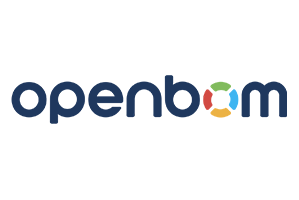I was recently able to catch up with Oleg Shilovitsky for an update on OpenBOM. In addition to his high blogging productivity, he and the OpenBOM team have been even harder at work developing new capabilities and expanding their reach. I’ve enjoyed following OpenBOM’s progress because they take a practical approach to solving manufacturer’s problems, started small, but built on a modern cloud stack using graph database technology so their architecture is built to scale and handle very complex problems.
They obviously help manage bills of material, one of the most challenging aspects of manufacturing definition and communication, but that’s not all. The solution has been extended to become a “digital thread platform”. OpenBOM now offers PDM features and basic capabilities for inventory, order planning, and purchasing. They’ve also continued to support more mature, complex processes by adding more data / lifecycle management features like change management, revisioning and integration with ERP. They offer an alternative, or an add-on, for smaller organizations or small groups like prototype shops in larger companies to get away from spreadsheets to manage BOMs, inventory, and orders.
As I mentioned, they’ve been hard at work. Recent enhancements allow better adoption, such as the addition of user-defined commands using a no-code approach. They have also extended onboarding training, which is included in their subscription. This is on top of embedded support in the product.
What should we look for going forward? OpenBOM will continue to support more complex scenarios including those in enterprise companies and more regulated industries. These include security enhancements to support SOC2 and offering more cloud deployment options. Lastly, they just announced a graph navigation capability that takes advantage of their core graph modeling capabilities to help companies explore their product data relationships more directly. Stay tuned for more on the opportunities that will offer.
OpenBOM is still small, but they are important. They are exploring new ways of working and filling an important need in the market. We expect to see them continue to grow and expand.


